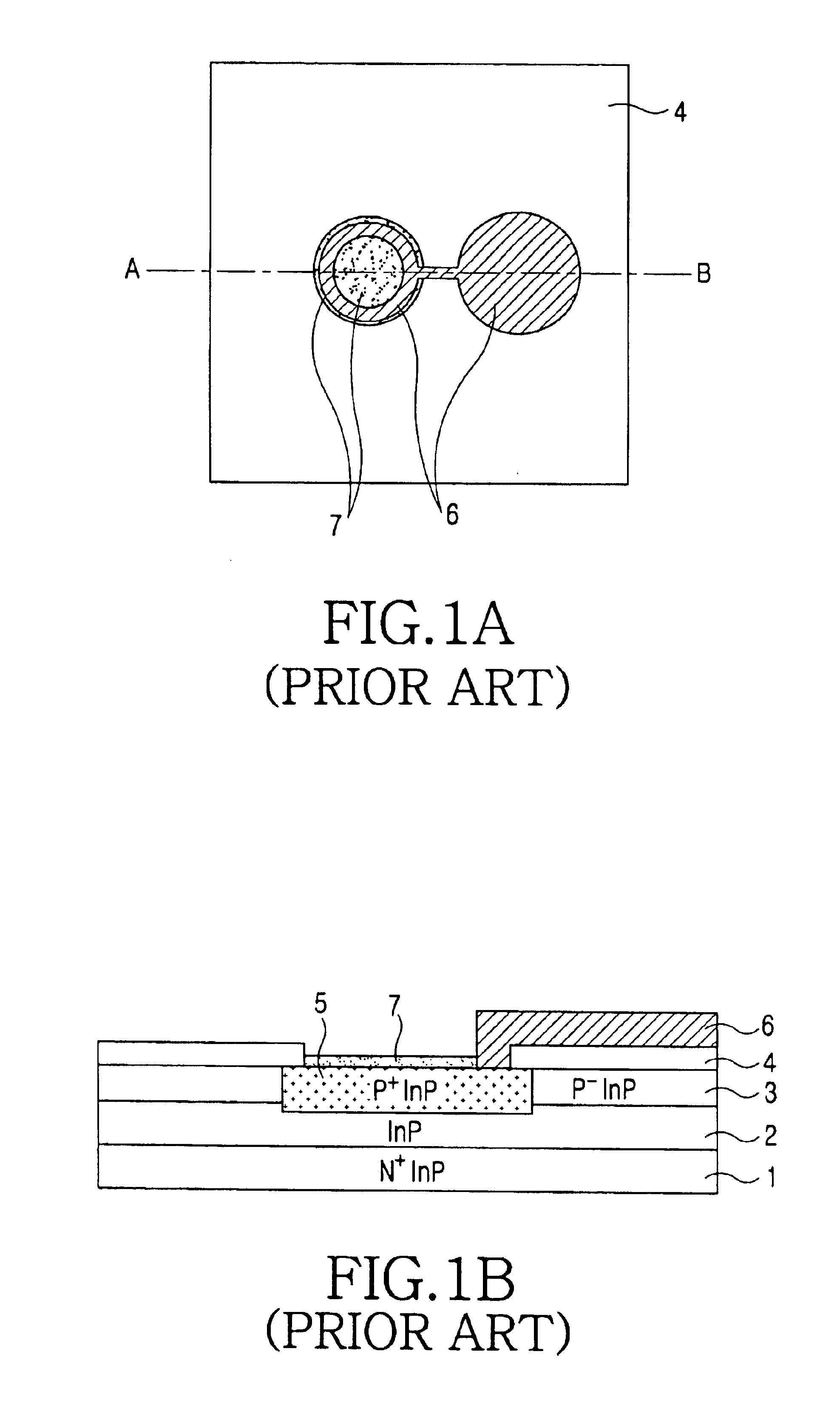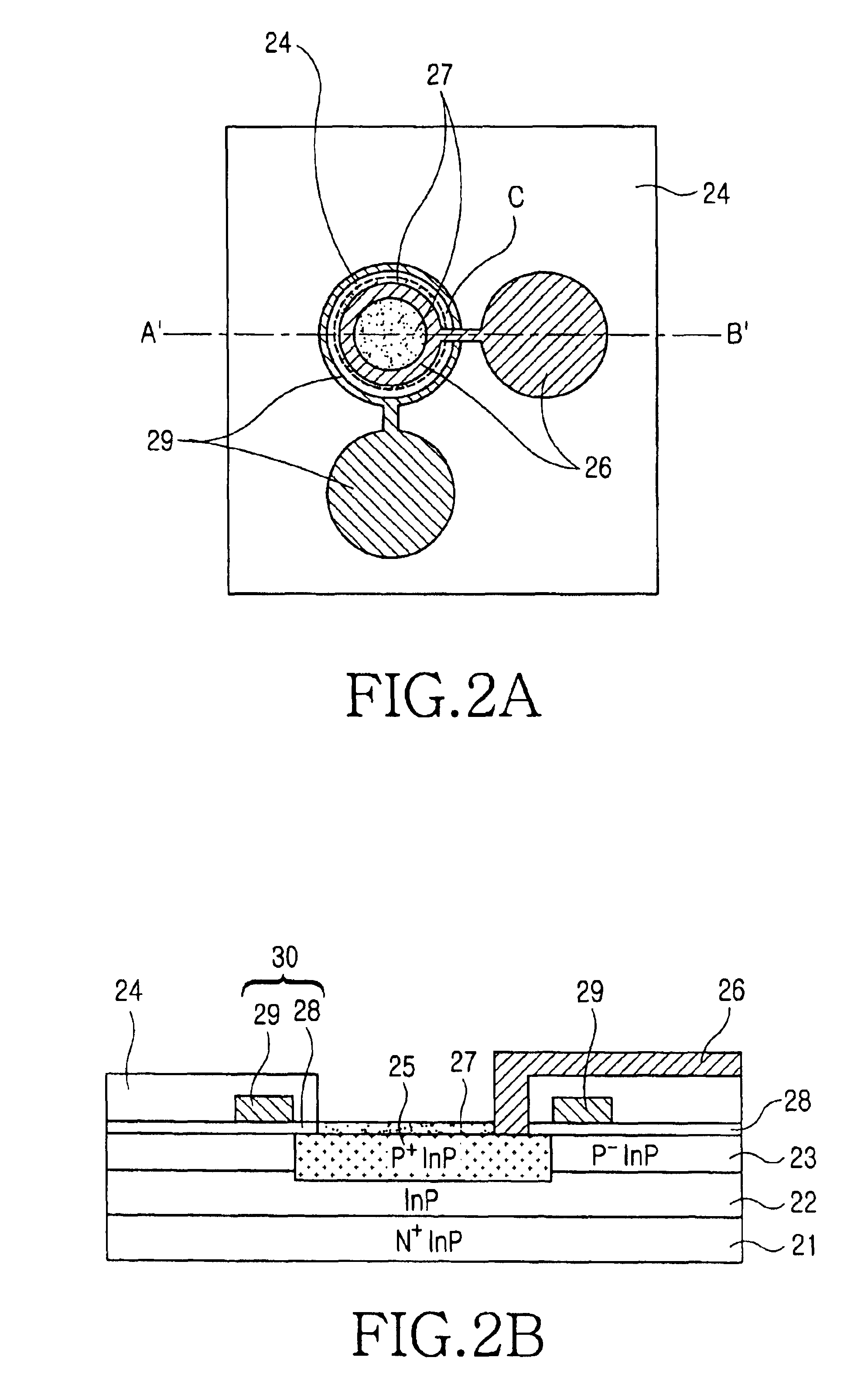PIN photodiode
a photodiode and pin technology, applied in the field of pin photodiodes, can solve the problems of parasitic effect that increases the electrostatic capacitance of the element and deteriorates the high-speed operating property of the diode element, and achieves the effect of suppressing the increase in the electrostatic capacitance of the photodiod
- Summary
- Abstract
- Description
- Claims
- Application Information
AI Technical Summary
Benefits of technology
Problems solved by technology
Method used
Image
Examples
Embodiment Construction
Hereinafter, preferred embodiments of the present invention will be described with reference to the accompanying drawings. For the purposes of clarity and simplicity, a detailed description of known functions and configurations incorporated herein will be omitted as it may make the subject matter of the present invention unclear.
FIG. 2a is a top plan view of a PIN photodiode in accordance with an embodiment of the present invention, and FIG. 2b is a cross-sectional view taken along the line A′-B′ of FIG. 2a.
As shown in FIGS. 2a and 2b, the PIN photodiode in accordance with the present embodiment includes: an InP layer 22, which is a non-doped intrinsic semiconductor layer, a P− InP layer 23, a donut-shaped SiN insulation layer 24 with a circular window formed in the center part thereof, a P+ bonding layer 25 formed on the InP layer 22 within the circular window, an electrode pad 26 formed on the P+ bonding layer 25, and a SiN anti-reflection layer 27 formed on the P+ InP layer 25. ...
PUM
 Login to View More
Login to View More Abstract
Description
Claims
Application Information
 Login to View More
Login to View More - R&D
- Intellectual Property
- Life Sciences
- Materials
- Tech Scout
- Unparalleled Data Quality
- Higher Quality Content
- 60% Fewer Hallucinations
Browse by: Latest US Patents, China's latest patents, Technical Efficacy Thesaurus, Application Domain, Technology Topic, Popular Technical Reports.
© 2025 PatSnap. All rights reserved.Legal|Privacy policy|Modern Slavery Act Transparency Statement|Sitemap|About US| Contact US: help@patsnap.com



